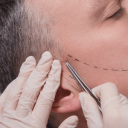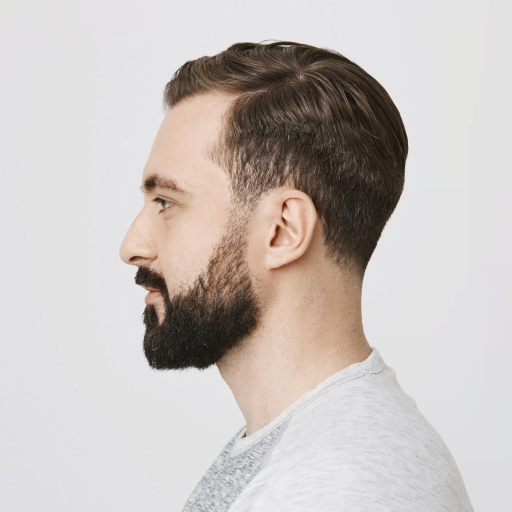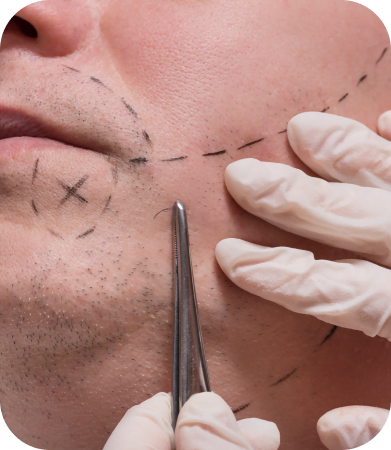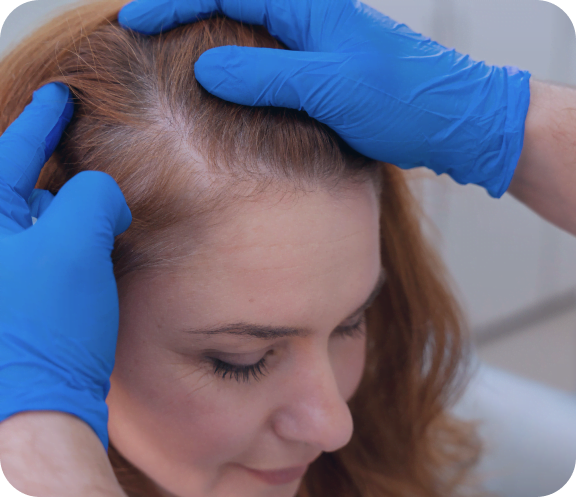A Personal Facial Hair Consultation in Northern Virginia
During your initial consultation, you can discuss how you’d like to transform the areas of your face with minimal hair growth with our hair transplant surgeon. You can provide photos to illustrate your aesthetic desires of how you’d like your beard, eyebrows, and mustache to appear, or you can provide past photos of yourself to give our hair restoration specialist a foundation from which to work for you.
Preparation for a Facial Hair Transplantation
Our hair transplant specialist at The Hair Transplant Center – Virginia will give you detailed directions to help prepare you for a facial hair transplant. Our hair transplant surgeon will demonstrate how to treat the hair in your donor site before the transplant occurs and steps for moisturizing your face before the procedure occurs. Carefully following these guidelines will help your FUE facial hair transplant proceed without problems.
Procedure for Facial Hair Transplantation
Follicular units are microscopic elements. Each follicular unit graft contains one to three hair follicles extracted from the donor site, the area where our hair surgeon harvests the follicles. We use the ATERA FUE system to identify areas of healthy hair growth, cradling the hair at the roots as the follicles are collected efficiently and with considerable care and safety.
A facial hair transplant requires the creative, skillful hands of an experienced hair transplant physician. Our hair transplant surgeon will study the type of hair follicles collected to determine the most appropriate location for hair transplantation. For example, mustache hair should be finer and more elongated than chin hair. Our hair transplant surgeon can evaluate your hair growth desires and create a plan for the positioning of each follicular unit graft.
Recovery From Facial Hair Transplantation and Results
Several hours after your facial hair transplant occurs, you may experience some discomfort in the area from which our hair transplant surgeon harvested the hair from your scalp. You may wish to apply a cold pack or soothing lotion to the hair donor site.
FUE facial hair implants produce tiny pinpricks from the area where follicles get extracted. These pin-sized marks will typically heal by themselves within 48 hours, and the full healing process should wrap up over the next two days.
If you discover that your transplanted hairs fall out of the transplant area after two weeks, don’t worry. This situation is normal. After three months, transplanted follicular units will stimulate new hair growth.



